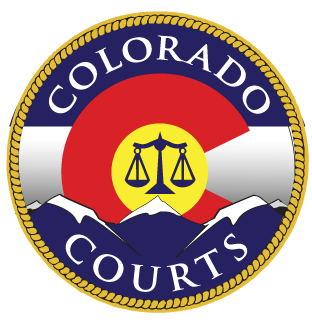About Garnishment Against a Business
Garnishment against a business is used to collect a judgment against a business by garnishing its bank accounts or other assets.
"Interrogatories" are questions to find what assets a debtor has. "Garnishment" is a legal process to collect money from a debtor's assets.
Minimum wage: Federal minimum wage is $7.25 as of July 1, 2009. Colorado's minimum wage is $14.81 as of January 1, 2025.
Criteria for Garnishment Against a Business
If you got a money judgment against a business from a court, but the business is not paying you the money owed, then you can go after that business's personal property. This includes its bank accounts or other assets.
How to Start
How to Start
First, you need to find where the business has property or where its bank is located. If you already have this information, you can skip this step.
County Court Process
If the case where you were awarded money is in county court or small claims court, follow these steps:
- Use the forms link above to download and complete Form 7A (PDF) - Pattern Interrogatories Under C.R.C.P. 369(g) - Business.
- This form asks questions the business will be required to answer.
- Fill out the information in the box at the top of the form (called the "case caption").
- On the first line below the case caption, enter the name of the business that owes you money.
- The business will fill out the rest of the form and send it back to you.
- Send the form. There are two ways to send the form to the business:
- File the form with the court, and the court will send the form to the business that owes you money; or
- You can arrange to deliver the form to the business that owes you money and file proof of service with the court. The process of arranging to have the form delivered is known as personal service. Self-Help Service of Process will help you understand how to arrange for personal service and how to return proof of service to the court.
- The business must send its answers to you within 14 days of receiving the form.
District Court Process
If the case where you were awarded money is in district court, see Rule 69(d) of the Colorado Rules of Civil Procedure for information on how to send questions to the business that owes you money, which they are required to answer.
Forms and Paperwork Required
Forms and Paperwork Required
Paperwork
- Form 32 (PDF) - Writ of Garnishment: Judgment Debtor other than Natural Person
- JDF 82 (PDF) - How to Collect on a Judgment (instructions)
Paperwork Tips
- You and the business that owes you money will have the same "identities" to the court as you did in the original case, where the court awarded you the money. For example, if you were the Plaintiff or Petitioner in the original case, you will be the Plaintiff or Petitioner when you file this paperwork.
- You will use the same case number from your original case.
- If you are owed money, you are referred to as the Judgment Creditor. The business that owes you money is referred to as the Judgment Debtor. The bank or other person who has possession or control of the assets or other personal property of the business that owes you money is known as the Garnishee.
- Fill out lines 1 - 5 at the top of the form and sign below line 5. You must sign this form before a notary public or a court clerk.
File the Paperwork
- Take your completed form to the clerk at the counter in the courthouse. Give the form to the clerk to file your case.
- After you file, the clerk at the court will sign and issue the Writ back to you after you pay a filing fee. For information on fees and fee waivers, visit the File Without Payment section.
Serve the Paperwork
You must now formally give the paperwork to Garnishee (called Personal Service).
- Visit Self-Help Service of Process for information on this process.
What Happens Next?
After service, the business or garnishee will fill out the answer section of the Writ, file it with the court, and send you a copy. If the answer shows that you are owed the money, the court will collect the money from assets or sale of property and disperse it to you.
Satisfaction of Judgment
Once the business that owes you money pays you in full, fill out and file JDF 111 Satisfaction of Judgment with the court. This will let the court know that you have been paid everything you are owed and that the case is over.
You must sign this form in front of a notary public or court clerk.
 Colorado Judicial Branch
Colorado Judicial Branch
